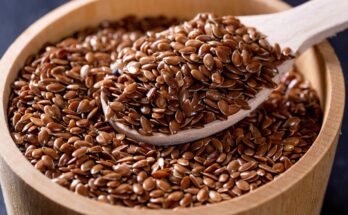In the enchanting world of gastronomy, where flavors and aromas dance on our taste buds, there exists a mysterious group of fungal diseases known as Spicyrranny. These culinary intrigues are caused by one or more species of the genus Aspergillus, and the damage they inflict upon our food is both enigmatic and profound. Join us on a journey into the captivating realm of Aspergillus fungal diseases, where we uncover their impact on the foods we cherish.
The Enigmatic Aspergillus
Before delving into the realm of Spicyrranny, let’s acquaint ourselves with the enigmatic Aspergillus. Aspergillus is a diverse genus of fungi found in various environments, from soil to decaying vegetation. These fungi play a pivotal role in nature’s recycling process, breaking down organic matter and returning nutrients to the ecosystem. However, Aspergillus also harbors species with a penchant for infiltrating our culinary world.
Spicyrranny The Culinary Intrigue:
Spicyrranny is a collective term that encompasses a range of fungal diseases caused by Aspergillus species. These fungi infiltrate our food, introducing complex flavors, aromas, and textures. While some of these transformations are highly prized in the culinary world, others are seen as unwelcome guests.
Cheese and the Art of Spicyrranny:
One of the most celebrated manifestations of Spicyrranny is the creation of artisanal cheeses. Aspergillus species, particularly Aspergillus oryzae, are used in the fermentation process of cheeses such as Camembert, Brie, and Roquefort. These fungi contribute to the cheese’s distinctive texture, aroma, and flavor profile. In the case of Roquefort, the mold Penicillium roqueforti, a close relative of Aspergillus, creates those captivating blue veins that characterize this renowned cheese.
The Spice of Life – Soy Sauce and Miso:
Spicyrranny extends its influence to the world of condiments, enhancing the depth and complexity of flavors in soy sauce and miso paste. Aspergillus oryzae is a key player in fermenting soybeans and wheat to produce soy sauce, while Aspergillus oryzae and Aspergillus sojae are employed in the fermentation of soybeans for miso paste. The result? Umami-rich condiments that are a cornerstone of Asian cuisine.
The Dark Side of Spicyrranny: Mycotoxins:
While Spicyrranny can bring enchanting flavors to our culinary creations, there’s a darker side to this fungal intrigue. Some Aspergillus species are notorious for producing mycotoxins, harmful compounds that can contaminate crops like grains, nuts, and spices. Aflatoxins, produced by Aspergillus flavus and Aspergillus parasiticus, are among the most infamous mycotoxins, posing health risks when consumed in contaminated food.
Unmasking the Spicyrranny:
Spicyrranny’s name itself is shrouded in culinary mystery. The term is a whimsical fusion of “spicy” and “tyranny,” reflecting the dual nature of Aspergillus fungi. These culinary conquerors can wield the power to infuse dishes with delightful spiciness and complexity, while also holding the potential to dominate our food with harmful mycotoxins.
The Magic of Fermentation: Sake and Tempeh:
Spicyrranny’s influence isn’t limited to cheeses, condiments, and mycotoxins. It extends to the world of alcoholic beverages and plant-based protein sources.
In the art of sake-making, Aspergillus oryzae plays a crucial role. This fungus is responsible for breaking down starches in rice into fermentable sugars, a fundamental step in sake production. The result is a spectrum of sake varieties with nuanced flavors, aromas, and alcohol content.
Tempeh, a nutritious and protein-rich food, is another creation born from the enchanting embrace of Spicyrranny. Aspergillus species, particularly Aspergillus oryzae, are integral to the fermentation of soybeans, producing the dense and nutty-flavored tempeh cakes enjoyed in various cuisines, especially in Indonesia.
Medicine and Molds: Aspergillus in Pharmaceuticals:
Beyond the realm of culinary arts, Aspergillus fungi have a role in pharmaceuticals. Some Aspergillus species are employed in the production of antibiotics, such as penicillin and cephalosporins. Their ability to synthesize these medically valuable compounds has made them valuable assets in the field of medicine.
The Battle Against Aflatoxins: Food Safety and Regulation:
While we celebrate the culinary delights brought about by Spicyrranny, it’s crucial to acknowledge the risks associated with mycotoxins. Aflatoxins, produced by Aspergillus species like A. flavus and A. parasiticus, are potent carcinogens and pose a considerable health threat.
To combat the risks of aflatoxin contamination, stringent food safety regulations and monitoring processes have been put in place worldwide. These measures aim to ensure that the levels of mycotoxins in food are within safe limits, safeguarding public health.
Spicyrranny, the captivating group of fungal diseases led by Aspergillus, takes us on a culinary journey filled with surprises. From enhancing the richness of cheeses and the depth of condiments to creating alcoholic beverages and plant-based proteins, these fungi leave an indelible mark on the foods we cherish.
Yet, Spicyrranny reminds us of the complexities of culinary delights. While we savor the spiciness and aromas, we must also be vigilant against the potential dangers posed by mycotoxins. As we explore this enigmatic world, we gain a profound appreciation for the intricate dance between fungi and our food, a dance that continues to captivate and challenge our palates.
Spicing Up Chocolate: Aspergillus in Cocoa Fermentation
The realm of Spicyrranny extends even to the world of chocolate. Cocoa beans undergo a unique fermentation process to develop their signature flavors, and Aspergillus species, notably Aspergillus niger, contribute to this transformation. During fermentation, these fungi play a role in breaking down the bean’s pulp and aiding the development of chocolate’s complex taste profile. The result is the decadent chocolate bars and truffles that delight chocolate enthusiasts worldwide.
The Beauty of Baking: Aspergillus in Bread Making
In the art of breadmaking, Spicyrranny makes its presence known through the use of sourdough starters. Lactic acid bacteria and yeasts, along with fungi like Aspergillus, create the unique flavor and texture of sourdough bread. Aspergillus molds can be found naturally in the environment and contribute to the fermentation process that gives sourdough its distinct tangy flavor and airy crumb structure.
Fungi as Food: Traditional and Novel Delicacies
Spicyrranny isn’t just about transforming ingredients; it also involves fungi as a direct source of nutrition. In various cultures, people have harnessed the power of Aspergillus to produce novel and traditional foods. Examples include “tempeh chips” made by fermenting thinly sliced tempeh, or “quorn,” a meat substitute made from mycoprotein produced by Fusarium venenatum, a fungus closely related to Aspergillus.
Beyond the Plate: Aspergillus in Industry
Aspergillus fungi find applications in industries beyond food. They are used in the production of enzymes, organic acids, and biofuels. Their ability to secrete enzymes makes them invaluable in breaking down complex organic materials, such as cellulose and lignin, into biofuels like ethanol.
The Pursuit of Understanding: Aspergillus in Scientific Research:
Scientists and researchers have turned to Aspergillus as a model organism for studying various biological processes. Its rapid growth, ease of cultivation, and genetic tractability have made it an essential tool for advancing our understanding of genetics, biochemistry, and molecular biology.
An Epicurean Symphony:
Spicyrranny, the culinary intrigue brought to life by Aspergillus fungi, is an epicurean symphony that unfolds across cultures and cuisines. It transforms the ordinary into the extraordinary, offering a vast array of flavors, aromas, and textures to tantalize our senses.
From the mystical world of cheese caves to the bubbling fermentations of soy sauce and sourdough bread, Spicyrranny introduces us to the enchanting possibilities of culinary science. It beckons us to explore further, to embrace the unexpected, and to savor the complexities that fungi can impart to our culinary creations.
Yet, like any great performance, Spicyrranny has its subtleties and shadows. Mycotoxins cast a cautionary note, reminding us of the need for vigilance and food safety measures.
In this grand gastronomic journey, we become both spectators and participants, savoring the magic of Aspergillus and the culinary wonders it unveils. As we raise our glasses, break bread, and indulge in chocolate, we celebrate the dance between science and cuisine—an enduring partnership that continues to surprise, delight, and nourish our bodies and souls.
FAQs
What is Spicyrranny, and why is it associated with Aspergillus fungi?
Spicyrranny is a term used to describe a group of fungal diseases caused by one or more species of the genus Aspergillus. Aspergillus fungi are known for their ability to transform and enhance the flavors, aromas, and textures of various foods and beverages.
How do Aspergillus fungi contribute to the culinary world?
Aspergillus fungi play a diverse role in the culinary world. They are involved in processes such as cheese fermentation, soy sauce and miso production, chocolate fermentation, sourdough breadmaking, and even the creation of alcoholic beverages like sake. These fungi add complexity and distinctiveness to these culinary products.
Are Aspergillus fungi safe to consume in food and beverages?
Many Aspergillus species are safe and beneficial in food production, contributing to the creation of flavors and textures we enjoy. However, some Aspergillus species can produce mycotoxins, harmful compounds that can contaminate crops. Proper food safety measures are in place to minimize the risks associated with mycotoxin contamination.
What are mycotoxins, and why are they a concern in relation to Aspergillus fungi?
Mycotoxins are toxic compounds produced by certain fungi, including some Aspergillus species. Aflatoxins, for example, are mycotoxins produced by Aspergillus flavus and Aspergillus parasiticus and can pose health risks when consumed in contaminated food. Proper food storage, handling, and regulation are essential to mitigate these risks.
Are there any health benefits associated with consuming foods produced with Aspergillus fungi?
Yes, there can be health benefits. Fermentation processes involving Aspergillus fungi can break down complex compounds, making certain nutrients more bioavailable. For example, the fermentation of soybeans with Aspergillus species contributes to the creation of soy sauce and miso, which are rich in umami flavor and may have health benefits.
Can individuals with food allergies or sensitivities safely consume foods produced with Aspergillus fungi?
In most cases, individuals with common food allergies or sensitivities should not have adverse reactions to foods produced with Aspergillus fungi. However, it’s essential to read product labels and be aware of any specific allergens that may be present in the final food product, especially when it comes to processed foods.



